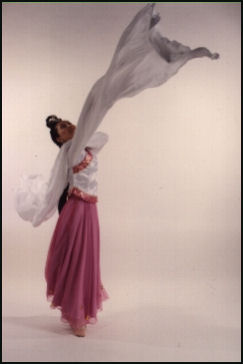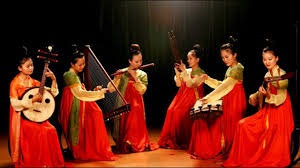
Dance in China appears to have grown out of religious rituals and has a long association with theater and the martial arts. Most forms of traditional dance survive in Chinese opera. Many stylized martial arts movements are also elements of dance.
The earliest forms of dance grew out of religious rituals—including exorcism dances performed by shaman and drunken masked dances—and courtship festivals and developed into a forms of entertainment patronized by the court. In ancient texts there are descriptions of troupes of women dancers entertaining guests at official banquets and drinking parties.
Images of Chinese dancers have been found on 4,500-year-old pottery. The Book of Songs recorded a dance festivals in the Zhou dynasty (1100-221 B.C.). According to Chinese mythology the cultural hero Fu Xo gave humans the fish net and the Harpoon Dance; the god She Nong created agriculture and the Plough Dance; and the Yellow Emperor, the legendary ruler from the 26th century B.C., is honored with Dance of the Cloud Gate. Ancient texts also mention hunting dances and a Constellation Dance, which was performed to seek help from the gods for a good harvest.

In ancient times, dance was regarded as kind of physical exercise that help harmonize the body and the mind. It was incorporated into Confucian rituals and military exercises. One early Confucian dance called the Great Dance of Zhou featured performers with flutes and pheasant feathers. In
Han dynasty (206 B.C.”A.D. 220) dances included a dance with 16 boys acting out chores performed by farmers such reaping, cutting grass and shooing away birds, and a dance with 300 young girls moving around a sacrificial altar. Bas reliefs and rubbings from the period depict dances with weapons, scarves and long sleeves. The movements that were represented are similar to dance moves still performed today.
By the A.D. 6th century pantomime dances were being performed in dynastic courts. Regarded as the precursors of Chinese theater, they blended stories, songs and dances. The performers wore masks or painted their faces. Early pieces from this genre include a performance based on the legend of Prince Lan Ling and a dance hall-style farce about a drunken wastrel called The Swinging Wife.
Sources:
Facts and Details




